UMC is well-known having produced highly-compatible cloned versions of the NES CPU and PPU chips that were built into almost all Famiclone consoles from 1988 to the early 2000s. In 1997 or so, they stepped up their game and introduced the first NES-on-a-Chip (NOAC) with additional features: the UM6578, with 10 KiB of CPU memory (compared to the NES' 2 KiB), 10 KiB of PPU memory (compared to the NES' 2 KiB), and four bits per pixel graphics (compared to the NES' two bits per pixel). The UM6578 so far has been unemulated and its games undumped, unlike its much more famous successor NOACs, VT02 and VT03, from V.R. Technologies. That is about to change!
Handy Boy 11-in-1
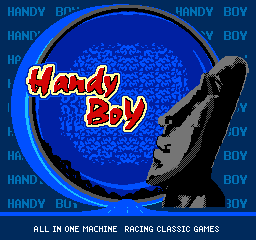
Emulator users have played Jungletac's games before on VT03- and VT09-based plug-and-play consoles, such as the "VG Pocket" series. Many of these games always had some strange quality about them: the lack of proper title screens, odd color choices, very repetitive stock music, and gameplay that seemed to resemble well-known Famicom games but was sufficiently different in timing and machine code to pass as "derivative but original". And most puzzling, these games used the VT03's four bits-per-pixel graphics mode, yet still restricted themselves to the normal 52 colors of the original NES palette.
And now we know why all that is so: Jungletac originally made most of these games for the UM6578! Back in 2001, they were basically elaborate hacks of popular Famicom games, most with the original music and gameplay mostly intact, but with (sometimes) highly enhanced graphics and even additional gameplay features. When the UM6578 NOAC went out of production sometime in 2002-2003, Jungletac ported these "Jungletac original versions" to the VT03. Apparently fearing legal problems, they not only reimplemented the game logic from scratch so as to no longer use any copyright-infringing code, but also removed most title screens and replaced all soundtracks, retaining only the new graphics from their original 2001 versions. With the UM6578 being emulated, we now get to see these titles in their original 2001 versions, eleven of which can be found on this "Handy Boy" console from that same year.
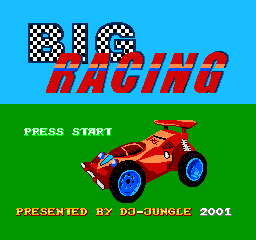
The first game, Big Racing, is either a very advanced hack of Road Fighter with R.C. Pro-Am elements mixed-in, or an entirely original game. Race on a curved track that scrolls both horizontally and vertically and follow your progress on the map of the race track at the bottom of the screen. The game's reprogrammed VT03/VT09 version, to be found on the "Classic Max Lite 120-in-1", greatly simplifies this gameplay and just shows a track without any curves whatsoever, always going straight-ahead, even as the map of the race track still misleadingly shows the original track layouts!
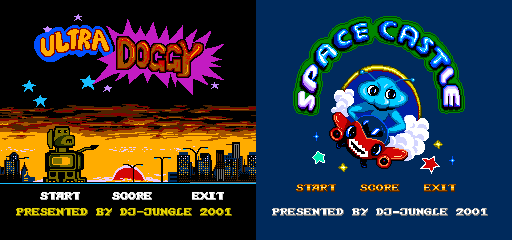
Ultra Doggy and Space Castle are two games that (as far as we know) are not graphics hacks of Famicom games. Ultra Doggy is obviously inspired by Frogger and has you control a small dog who must collect two keys from the street before being able to reach the exit. Space Castle is a slightly more difficult Space Invaders clone.
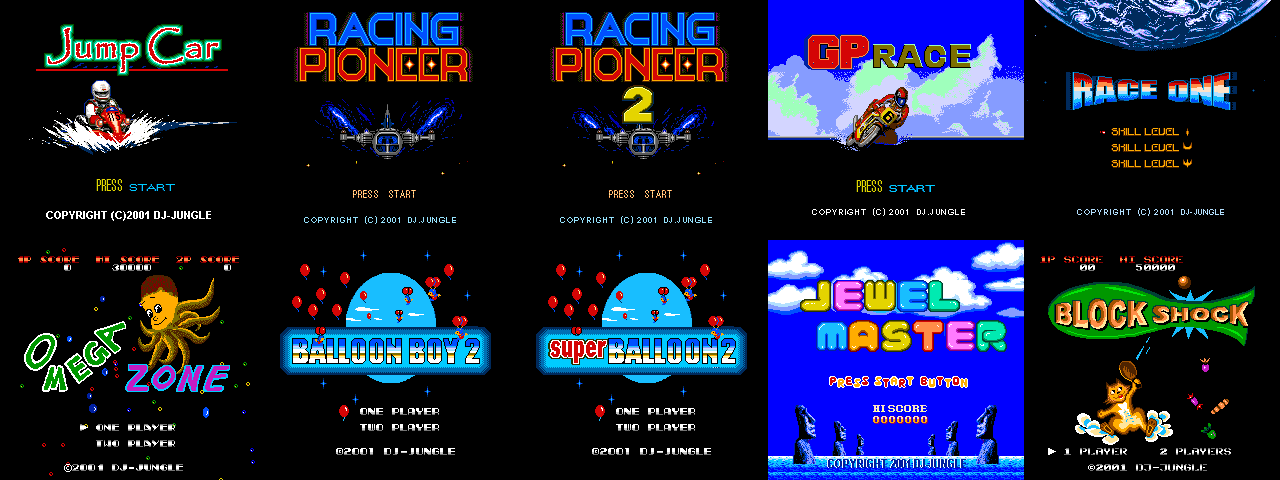
The remaining games are graphics hacks of popular Famicom games of increasing graphical quality: Jump Car based on Bump 'n Jump a.k.a. "Buggy Popper", Racing Pioneer" and GP Race based on Road Fighter, Race One based on F-1 Race (with the Astro Boy theme song at the title screen), Omega Zone based on Galaga, Jewel Master based on Magic Jewelry from Huang Xinwei (itself a clone of Sega's Columns), Block Shock based on Arkanoid, and Balloon Boy 2 based on Balloon Fight.
Here's hoping that over time, all Jungletac games become available in their original versions! Our archive also includes extracted versions of each game. Three of them have alternate versions, with different title screens and different levels, that are enabled by initializing a memory location with a non-zero value. It's not known whether these can be activated from the Handy Boy's menu, but thanks to us providing them in extracted form, you no longer need to!
Bandai Gamepad
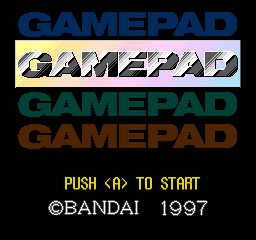
In 1997, Bandai released a Famiclone-based plug-and-play gamepad with ten board games on it. In addition to playing each game individually, it also features a Story Mode that lets you play a selection of six games in succession, grades and (presumably) presents you with a different ending depending on your performance. Story Mode saves your progress in a 256-byte EEPROM. This gamepad was quite rare even in Japan; one reason for this rarity could be that in 1997, Nintendo's Famicom patents had not yet expired, with the resulting legal problems preventing a wider distribution.
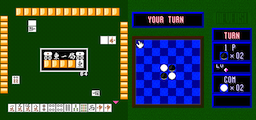
City Patrolman
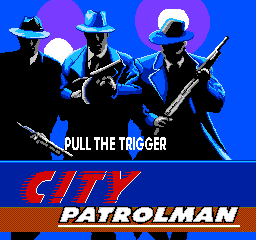
The UM6578 was not just used in plug-and-play consoles, but also in cartridge-based Famiclones that play both Famicom games and 6578-enhanced games, such as Daidaixing's (or Timetop, for us Westerners). City Patrolman, one of these cartridge-based 6578-enhanced games, is a clone of Konami's lightgun-based arcade game Lethal Enforcers, of which we previously saw the Famicom port (renamed to Lethal Weapon). It's surprisingly fun to play, with the very grungy-sounding PCM samples and the music that is basically a medley of various film and television themes (including Airwolf) only adding to the hilarity.
Other 6578-enhanced Timetop games that have not yet been dumped include Baseball, Ping Pong and Tennis. If you're curious on how those cartridge look: here's a scan of City Patrolman. Fight back, boys!
At the time of this writing, only NintendulatorNRS emulates the UM6578 hardware. Its latest version (binary and source) can be downloaded from its dedicated page in the blog sidebar, if you want to have a blast trying those games.
➡Download the ROMs⬅
Credits to NewRisingSun for the emulation, krzysiobal for dumping City Patrolman, Frank Cifaldi for buying and Sean Riddle for dumping the Bandai Gamepad and the Handy Boy.
Handy Boy 11-in-1

Emulator users have played Jungletac's games before on VT03- and VT09-based plug-and-play consoles, such as the "VG Pocket" series. Many of these games always had some strange quality about them: the lack of proper title screens, odd color choices, very repetitive stock music, and gameplay that seemed to resemble well-known Famicom games but was sufficiently different in timing and machine code to pass as "derivative but original". And most puzzling, these games used the VT03's four bits-per-pixel graphics mode, yet still restricted themselves to the normal 52 colors of the original NES palette.
And now we know why all that is so: Jungletac originally made most of these games for the UM6578! Back in 2001, they were basically elaborate hacks of popular Famicom games, most with the original music and gameplay mostly intact, but with (sometimes) highly enhanced graphics and even additional gameplay features. When the UM6578 NOAC went out of production sometime in 2002-2003, Jungletac ported these "Jungletac original versions" to the VT03. Apparently fearing legal problems, they not only reimplemented the game logic from scratch so as to no longer use any copyright-infringing code, but also removed most title screens and replaced all soundtracks, retaining only the new graphics from their original 2001 versions. With the UM6578 being emulated, we now get to see these titles in their original 2001 versions, eleven of which can be found on this "Handy Boy" console from that same year.

The first game, Big Racing, is either a very advanced hack of Road Fighter with R.C. Pro-Am elements mixed-in, or an entirely original game. Race on a curved track that scrolls both horizontally and vertically and follow your progress on the map of the race track at the bottom of the screen. The game's reprogrammed VT03/VT09 version, to be found on the "Classic Max Lite 120-in-1", greatly simplifies this gameplay and just shows a track without any curves whatsoever, always going straight-ahead, even as the map of the race track still misleadingly shows the original track layouts!

Ultra Doggy and Space Castle are two games that (as far as we know) are not graphics hacks of Famicom games. Ultra Doggy is obviously inspired by Frogger and has you control a small dog who must collect two keys from the street before being able to reach the exit. Space Castle is a slightly more difficult Space Invaders clone.

The remaining games are graphics hacks of popular Famicom games of increasing graphical quality: Jump Car based on Bump 'n Jump a.k.a. "Buggy Popper", Racing Pioneer" and GP Race based on Road Fighter, Race One based on F-1 Race (with the Astro Boy theme song at the title screen), Omega Zone based on Galaga, Jewel Master based on Magic Jewelry from Huang Xinwei (itself a clone of Sega's Columns), Block Shock based on Arkanoid, and Balloon Boy 2 based on Balloon Fight.
Here's hoping that over time, all Jungletac games become available in their original versions! Our archive also includes extracted versions of each game. Three of them have alternate versions, with different title screens and different levels, that are enabled by initializing a memory location with a non-zero value. It's not known whether these can be activated from the Handy Boy's menu, but thanks to us providing them in extracted form, you no longer need to!
Bandai Gamepad

In 1997, Bandai released a Famiclone-based plug-and-play gamepad with ten board games on it. In addition to playing each game individually, it also features a Story Mode that lets you play a selection of six games in succession, grades and (presumably) presents you with a different ending depending on your performance. Story Mode saves your progress in a 256-byte EEPROM. This gamepad was quite rare even in Japan; one reason for this rarity could be that in 1997, Nintendo's Famicom patents had not yet expired, with the resulting legal problems preventing a wider distribution.

City Patrolman

The UM6578 was not just used in plug-and-play consoles, but also in cartridge-based Famiclones that play both Famicom games and 6578-enhanced games, such as Daidaixing's (or Timetop, for us Westerners). City Patrolman, one of these cartridge-based 6578-enhanced games, is a clone of Konami's lightgun-based arcade game Lethal Enforcers, of which we previously saw the Famicom port (renamed to Lethal Weapon). It's surprisingly fun to play, with the very grungy-sounding PCM samples and the music that is basically a medley of various film and television themes (including Airwolf) only adding to the hilarity.
Other 6578-enhanced Timetop games that have not yet been dumped include Baseball, Ping Pong and Tennis. If you're curious on how those cartridge look: here's a scan of City Patrolman. Fight back, boys!
At the time of this writing, only NintendulatorNRS emulates the UM6578 hardware. Its latest version (binary and source) can be downloaded from its dedicated page in the blog sidebar, if you want to have a blast trying those games.
➡Download the ROMs⬅
Credits to NewRisingSun for the emulation, krzysiobal for dumping City Patrolman, Frank Cifaldi for buying and Sean Riddle for dumping the Bandai Gamepad and the Handy Boy.
Comments
Add Comment
Comments are not available for this entry.